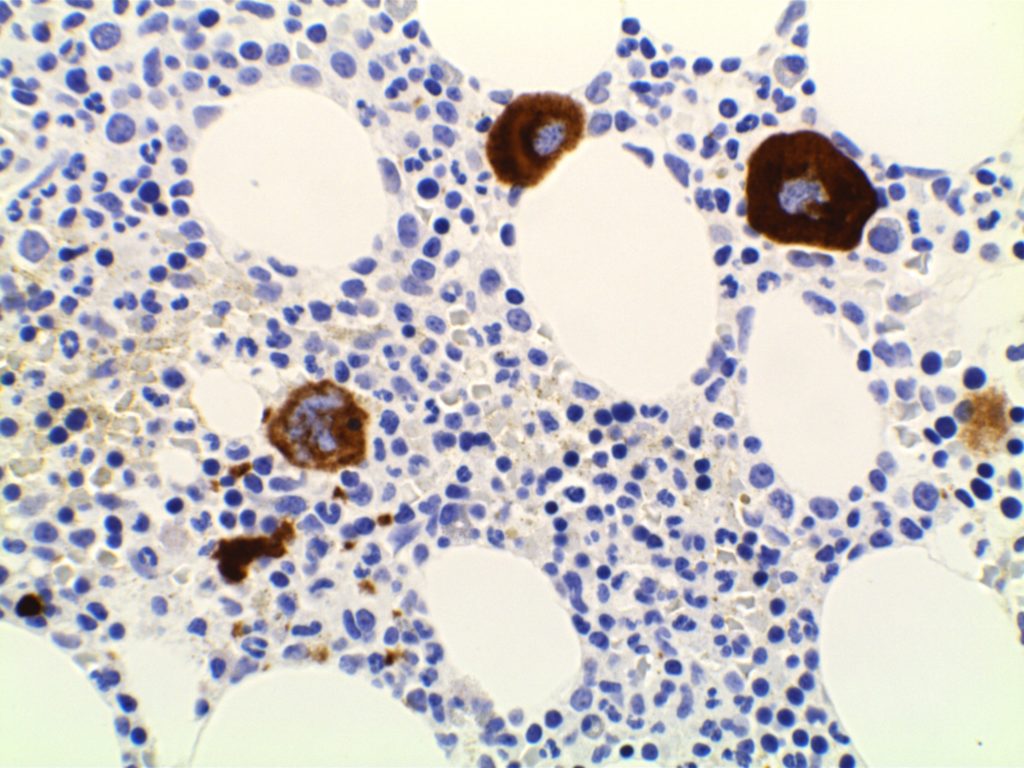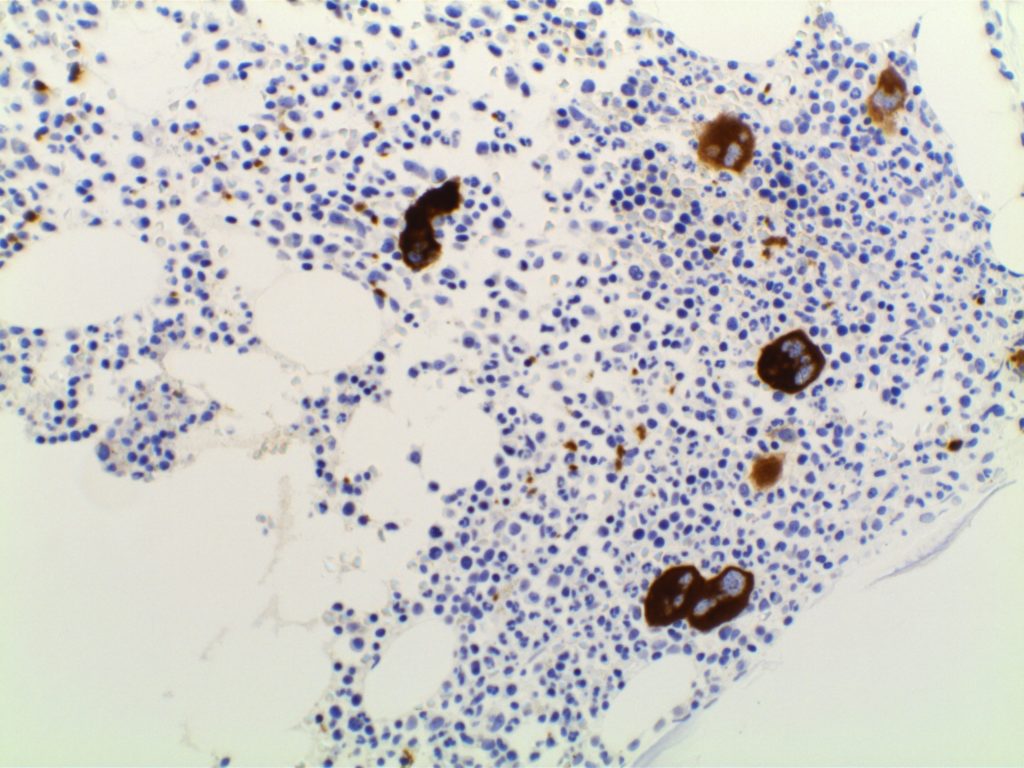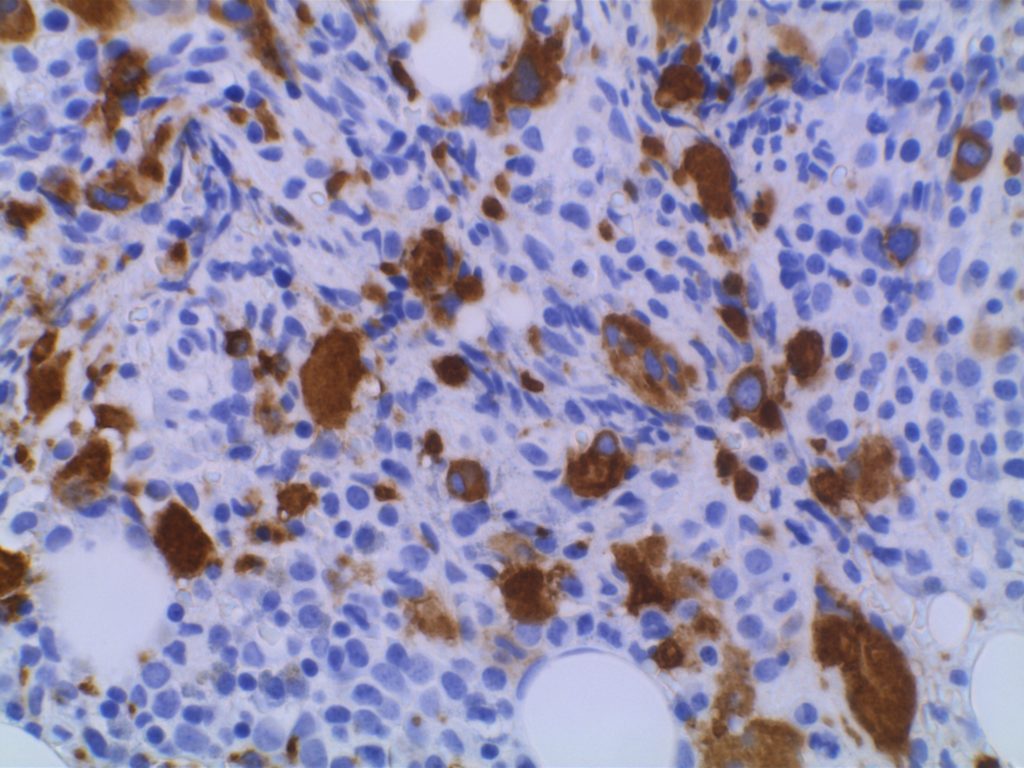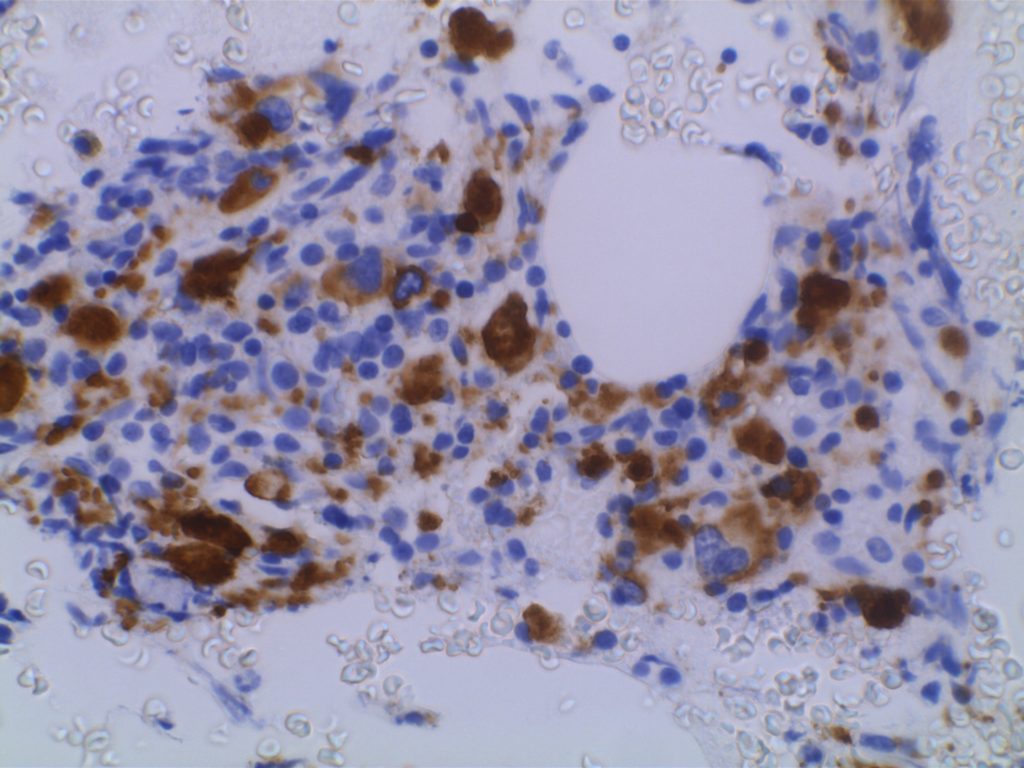IHC Characteristics
|
Positive
|
|
|
Positive
|
|
|
Beta-Catenin
|
Strong nuclear positivity in 67%
|
|
+/- (~50%+, usually due to CK19)
|
References
Mod Pathol 2008;21:756
Hum Pathol 2008;39:1459
|
p53
|
Often positive, and usually negative in endometrioid carcinoma.
|
|
Positive
|
|
|
Positive
|
|
|
Positive
|
|
|
Usually high proliferation index
|
|
|
Positive
|
|
|
Negative
|
|
|
Negative (may see low level expression)
|
|
|
Negative
|
|
|
Endocervical
Adenocarcinoma
|
Endometrial
Adenocarcinoma
|
|
Negative (7-8%+)
|
Positive (70-93%)
|
|
|
Positive (65-95%)
|
Usually Negative
|
|
|
Negative (4-20%+, 38% weak)
|
Strong Positive (67-90%)
|
|
|
Strong & Diffuse Positive (90-100%)
|
Patchy Positive cells (~35%)
|
|
|
HPV
|
Positive (67%)
|
Negative
|
|
|
Endocervical
Adenocarcinoma
|
|
|
Negative (7-8%+)
|
Positive (70-93%)
|
|
|
Positive (65-95%)
|
Usually Negative
|
|
|
Negative (4-20%+, 38% weak)
|
Strong Positive (67-90%)
|
|
|
Strong & Diffuse Positive (90-100%)
|
Patchy Positive cells (~35%)
|
|
|
HPV
|
Positive (67%)
|
Negative
|



